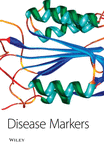Relation between MicroRNA Expression in Peritoneal Dialysis Effluent and Peritoneal Transport Characteristics
Abstract
Background: The role of microRNAs (miRNAs) in peritoneal transport is uncertain.
Methods: We studied 82 new peritoneal dialysis (PD) patients, 22 prevalent patients without ultrafiltration problem, and 6 patients with documented ultrafiltration problem. Peritoneal transport was determined by standard peritoneal equilibration test (PET). RNA was extracted from the PD effluent after PET, and intra-peritoneal expression of miRNA targets were quantified.
Results: There were significant difference in the PDE expressions of miR-15a and miR-21. There were modest inverse correlations between ultrafiltration volume and PDE expression of miR-17 (r = −0.198, p = 0.041) and miR-377 (r = −0.201, p = 0.041). There was an inverse correlations between dialysate-to-plasma creatinine concentration at 4 hours and PDE expression of miR-192 (r = −0.199, p = 0.040); while mass transfer area coefficient of creatinine correlated with PDE expression of miR-192 (r = −0.191, p = 0.049) and miR-377 (r = 0.201, p = 0.041). Amongst 7 randomly selected patients who had repeat PET after one year, there was a significant correlation between baseline PDE expression of miR-377 and change in ultrafiltration volume (r = −0.852, p = 0.015).
Conclusion: The miRNA expression in PDE, including miR-15a, miR-17, miR-21, miR-30, miR-192, and miR-377, correlated with peritoneal transport characteristics. Our result suggests that miRNA may play a role in the regulation of peritoneal membrane function.




